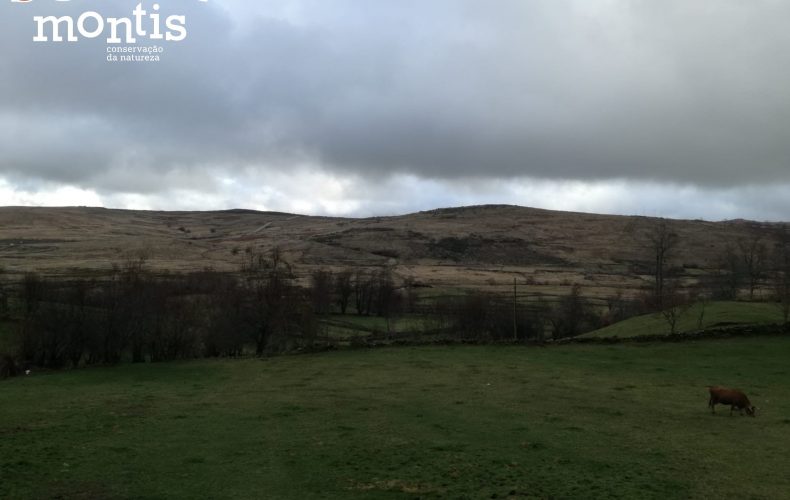
Visit to Campo Benfeito and Cotelo, in Serra do Montemuro
(Versão em Inglês)
On Saturday 18th of January, MONTIS organised a guided walk through the villages of Campo Benfeito and Cotelo as well as the surrounding nature, in Serra do Montemuro. In spite of the wet and windy conditions that day, there was a large turnout (more than 30 participants, including two babies and one dog!). As brand new volunteers, we appreciated the chance to discover remote locations within the Portuguese countryside.
The walk began with a visit to a workshop run by the “Capuchinhas” (a nickname used to refer to the ladies who work there). Once inside, two ladies explained the artisanal methods – passed on to them by their mothers and grandmothers – employed to manufacture garments, most notably traditional hooded capes. These hooded capes (“capas” or “capuchas” in Portuguese) are very thick, warm, and waterproof, making them perfect for villagers working in the cold, damp mountains.

Materials used include wool, linen, and burel (a type of material made out of pressed wool). The garments come in different colours, using natural dyes such as lichen from oak trees, walnut tree leaves, red berries, and onions, to name a few. The workshop has been running for 31 years, while the current “Capuchinhas” have been working together for 27 years.
We then traversed the picturesque village of Campo Benfeito, before reaching an open, wide, and dramatic landscape, dominated by wetlands. We learned that as a result of farming – mostly grazing by animals such as goats, sheep, and cows –, habitats and signs of biodiversity from the area are promoted. During the walk, we encountered different types of vegetation, especially oaks.

More specifically, we saw many Pyrenean oaks (Quercus pyrenaica; “Carvalho-negral” in Portuguese), which are common in mountainous areas in the North-Central region of Portugal. An easy way to distinguish this type of oak from others is by its leaves. Pyrenean oaks have a layer of fur on the back of their leaves, a protective measure against the cold and dryness of the areas in which they are found.
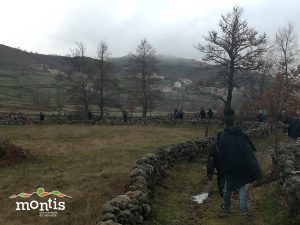
After this first stretch of agricultural parcels, abandoned plots of land became evident. Since the owners of these lands no longer manage them (through planting, or grazing, for example), small vegetation such as brooms (Genisteae; “Giestas” in Portuguese) are starting to take over. Overgrown brooms are a common challenge, as they have a negative impact on the ability of other species to grow, in many properties managed by MONTIS, such as Baldio de Carvalhais. During the walk, we also came across navelworts (Umbilicus rupestris; “Conchelo” in Portuguese); an edible plant with a lettuce-like taste.
The walk was concluded with much-welcomed hearty snacks, battling with the elements on top of the mountain, where the event had begun. We look forward to future guided walks and encourage more people to join these activities to learn about the natural richness of local areas, environmental challenges, and the efforts of MONTIS!
Claire and Juan

(Versão em Português)
Visita a Campo Benfeito e Cotelo, na Serra do Montemuro
No Sábado de 18 de Janeiro, a Montis organizou um passeio guiado pelas aldeias de Campo Benfeito e Cotelo, bem como às paisagens circundantes na Serra de Montemuro. Apesar do tempo molhado e ventoso desse dia, juntaram-se muitos participantes (mais de 30 pessoas, incluíndo dois bebés e um cão!). Como voluntários recém-chegados, apreciamos a oportunidade de descobrir as partes rurais e remotas de Portugal.
A caminhada começou com uma visita a uma oficina gerida pelas “Capuchinhas” (um nome usado para se referir as senhoras que trabalham ali). Dentro da oficina, duas senhoras explicaram os métodos artesanais – que lhes foram passados pelas suas mães e avós – de fazer vestuário, mais específicamente capas com capuz tradicionais. Estas capas com capuz (“Capuchas”) são bastante grossas, quentes, e à prova de água o que as torna perfeitas para os aldeãos trabalharem nas montanhas frias e húmidas.
Os materiais usados incluiam lã, linho e burel (um tipo de material feito a partir de lã prensada). O vestuário é feito em diferentes cores, usando tintes naturais, como os liquens de carvalhos, folhas de nogueiras, frutos vermelhos e cebolas, por exemplo. A oficina já funciona desde à 31 anos, e as “Capuchinhas” actuais já trabalham juntas à 27 anos.
Depois, atravessamos a pituresca aldeia de Campo Benfeito, antes de chegarmos à aberta, ampla e dramática paisagem dominada por lameiros. Aprendemos que como resultado da agricultura – maioritariamente pastorícia de animais como cabras, ovelhas e vacas – os habitats e a biodiversidade da região são valorecidos. Durante a caminhada, encontrámos vários tipos diferentes de vegetação, principalmente carvalhos.
Mais específicamente, vimos muitos carvalhos-negral, (Quercus pyrenaica), que são comuns nas áreas montanhosas da região Norte-Centro de Portugal. Uma maneira fácil de distinguir este tipo de carvalho de outros é pelas folhas. Os carvalhos-negral têm uma camada de pelinhos no dorso das suas folhas, uma medida de protecção contra o frio e secura das áreas onde são encontrados.
Depois da primeira parte de parcelas agrícolas, terrenos abandonados fizeram-se evidentes. Uma vez que os proprietários destes terrenos deixaram de os gerir (através de plantações or pastoreio, por exemplo), vegetação mais rasteira como as giestas, começaram a tomar conta.
Giestas com crescimento excessivo são um desafio comum, pois têm um impacto negativo no crescimento de outras espécies, como em muitas propriedades geridas pela MONTIS, como por exemplo no Baldio de Carvalhais. Durante a caminhada, também nos cruzamos com alguns conchelos (Umbilicus rupestris); um tipo de planta comestível que sabe a alface.
A caminhada chegou ao fim com uns saudáveis e muito bem-vindos petiscos, batalhando contra os elementos meteorológicos no topo da montanha onde o dia começou. Esperamos ansiosos pelos passeios futuros e encoragamos mais pessoas a se juntarem a estas actividade para aprenderem sobre a riqueza natural destas áreas locais, desafios ambientais e os esforços da MONTIS!
Claire e Juan

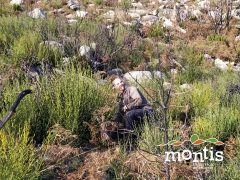
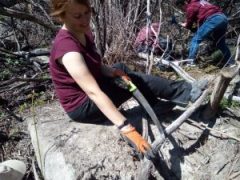
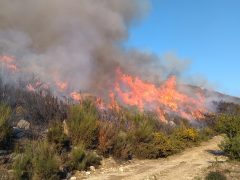
Leave a Comment